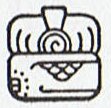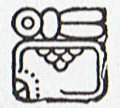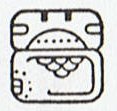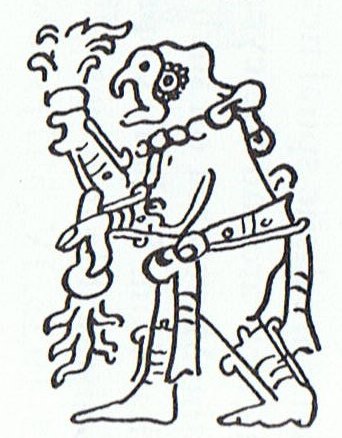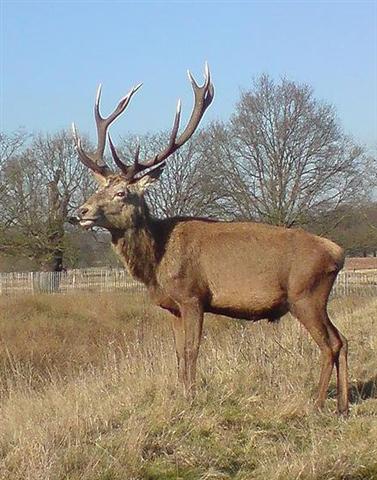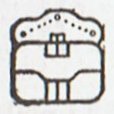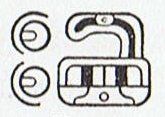469. The pair of koti places
in line Cb6 were, we can see, arriving before the
fellow falling on his face (leaving):
|
E haga
o tere
hia - te manu |
manu
gutu pao
hia |
tagata |
te
marama |
|
Tere.
1. To
run, to flee, to escape
from a prison. 2. To
sail a boat (also:
hakatere); tere
vaka, owner of a
fishing boat. 3.
(Deap-sea) fisherman;
tere kahi, tuna
fisherman; tere
ho'ou, novice
fisherman, one who goes
deap-sea fishing for the
first time. Penei te
huru tûai; he-oho te
tere ho'ou ki ruga ki te
hakanonoga; ana ta'e
rava'a, he-avai e te
tahi tagata tere vaka i
te îka ki a îa mo
hakakoa, mo iri-hakaou
ki te hakanonoga i te
tahi raá. The
ancient custom was like
this: the novice
fisherman would go to a
hakanonoga; if he
didn't catch anything,
another fisherman would
give him fishes to make
him happy so he'd go
again one day to the
hakanonoga (more
distant fishing zones
where larger fishes are
found). Vanaga. To
depart, to run, to take
leave, to desert, to
escape, to go away, to
flee, fugitive, to sail,
to row, to take refuge,
to withdraw, to retreat,
to save oneself;
terea, rest, defeat;
tetere, to beat a
retreat, to go away,
refugee; teretere,
to go away, hurrah;
hakatere, to set
free, to despatch, to
expel, to let go, to
liberate, to conquer,
helmsman; terega,
departure, sailing;
teretai, a sailor.
Churchill.
Gutu.
1. Lips,
mouth, beak, snout (goutu);
gutu ahu, swollen
lip; gutu hiti,
thick lip; gutu
mokomoko, pointed
lip; gutu no,
vain words; gutu
pakapaka, scabbed
lips; gutu raro,
lower lip; gutu ruga,
upper lip. Gutugutu,
snout. P Pau.: gutu,
lip, beak, bill. Mgv.:
gutu, the chin,
the mouth of a fish.
Mq.: nutu, beak,
snout. Ta.: utu,
lip, mouth, beak, snout.
Gutupiri,
attentively. Gututae,
attentively; gututae
mekenu, a small
mouth. Gututika,
tattoing on the lips. 2.
Pau.: Gutuafare,
to save, to economize.
Ta.: utuafare,
family, residence. 3.
Pau.: Guturoa, to
grimace, to pout. Mgv.:
guturoa, to
grimace. Churchill.
Pao.
To cut
off, to throw a lance.
Churchill.
Paopao,
spade, shovel, rubbish,
to lacerate, to have a
quarrel with. Churchill. |
 |
 |
 |
 |
|
Cb6-1 (508 = 365 + 135 +
8) |
Cb6-2 |
Cb6-3 (118 = 4 * 29½) |
Cb6-4 |
|
The Knot
(Ukdah) |
|
Star-25 (Horse) /
ANA-HEU-HEU-PO-5 (Pillar
where debates were held)
ALPHARD (The Horse) =
α
Hydrae
(142.3),
ω
Leonis (142.6),
τ¹
Hydrae
(142.7) |
Al Tarf-7 (The End)
ψ
Velorum (143.3),
ALTERF =
λ
Leonis,
τ²
Hydrae
(143.4),
ξ
Leonis (143.5) |
A Hydrae
(144.1)
VEGA (α Lyrae) |
UKDAH (Knot) = ι Hydrae
(145.4), κ Hydrae
(145.5),
SUBRA = ο Leonis
(145.8)
*104 = *145.4 - *41.4 =
*288 - *184 |
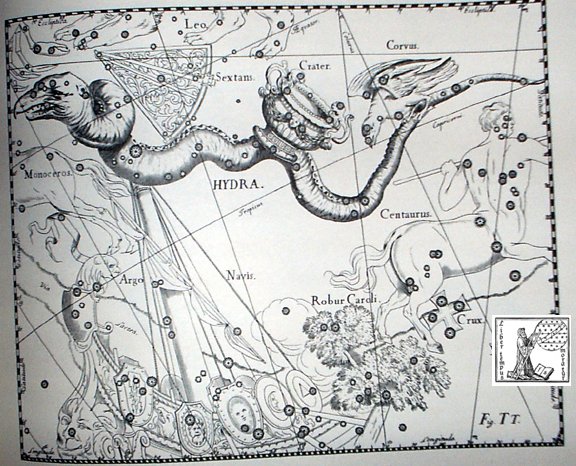
 |
|
ihe
tamaiti |
kotia - te
hokohuki |
kava haati |
kiore |
te
hokohuki |
kua tu te
rau hei |
te moko -
te hokohuki |
|
Hati
1. To break (v.t., v.i.);
figuratively: he hati te
pou oka, to die, of a
hopu manu in the
exercise of his office (en
route from Motu Nui
to Orongo). 2.
Closing word of certain
songs. Vanaga. Hahati.
1. To break (see hati).
2. Roughly treated, broken
(from physical exertion:
ku hahati á te hakari)
3. To take to the sea:
he
hahati te vaka.
Vanaga. Ha(ha)ti. To
strike, to break, to peel
off bark; slip, cutting,
breaking, flow, wave (aati,
ati, hahati);
tai hati, breakers,
surf; tumu hatihati,
weak in the legs;
hakahati, to persuade;
hatipu, slate. P
Pau.: fati, to break.
Mgv.: ati, hati,
to break, to smash. Mq.:
fati, hati, id.
Ta.: fati, to
rupture, to break, to
conquer. Churchill.
HAKI,
v. Haw., also ha'i
and ha'e, primary
meaning to break open,
separate, as the lips about
to speak, to break, as a
bone or other brittle thing,
to break off, to stop, tear,
rend, to speak, tell, bark
as a dog; hahai, to
break away, follow, pursue,
chase; hai, a broken
place, a joint; hakina,
a portion, part; ha'ina,
saying; hae,
something torn, as a piece
of kapa or cloth, a
flog, ensign. Sam., fati,
to break, break off; fa'i,
to break off, pluck off, as
a leaf, wrench off; fai,
to say, speak, abuse,
deride; sae, to tear
off, rend; ma-sae,
torn. Tah., fati, to
break, break up, broken;
fai, confess, reveal,
deceive; faifai, to
gather or pick fruit;
haea, torn, rent; s.
deceit, duplicity;
hae-hae, tear anything,
break an agreement; hahae,
id. Tong., fati,
break, rend. Marqu., fati,
fe-fati, to break,
tear, rend; fai, to
tell, confess; fefai,
to dispute. The same double
meaning of 'to break' and
'to say' is found in the New
Zealand and other Polynesian
dialects.
Malg., hai,
haïk, voice, address,
call. Lat., seco, cut
off, cleave, divide;
securis, hatchet;
segmentum, cutting,
division, fragment;
seculum (sc. temporis),
sector, follow
eagerly, chase, pursue;
sequor, follow; sica,
a dagger; sicilis,
id., a knife; saga,
sagus, a
fortune-teller. Greek,
άγνυμι,
break, snap, shiver, from
Ѓαγ
(Liddell and Scott);
άγν, breakage,
fragment;
έκας, adv, far
off, far away.
Liddell and Scott consider
έκας akin to
έκαςτος,
each, every, 'in the sense
of apart, by itself', and
they refer to the analysis
of Curtius ... comparing
Sanskrit
kas,
kâ,
kat (quis,
qua,
quid), who of
two, of many, &c. Doubtless
έκας and
έκαςτος
are akin 'in the sense of
apart, by itself', but that
sense arises from the
previous sense of
separating, cutting off,
breaking off, and thus more
naturally connects itself
with the Latin
sec-o,
sac-er, and
that family of words and
ideas, than with such a
forced compound as
είς and κας.
Sanskr., sach, to
follow. Zend, hach,
id. (Vid. Haug, 'Essay on
Parsis'.)
I am well
aware that most, perhaps
all, prominent philologists
of the present time - 'whose
shoe-strings I am not worthy
to unlace' - refer the Latin
sequor,
secus, even
sacer, and the
Greek
έπω, έπομαι,
to this Sanskrit sach.
Benfey even refers the Greek
έκας to this sach,
as explanatory of its origin
and meaning.
But, under correction, and
even without the Polynesian
congeners, I should hold
that sach, 'to
follow', in order to be a
relative to sacer,
doubtless originally meaning
'set apart', then 'devoted,
holy', and of έκας,
'far off', doubtless
originally meaning something
'separated', 'cut off from,
apart from', must also
originally have had a
meaning of 'to be separated
from, apart from', and then
derivatively 'to come after,
to follow'. The sense of 'to
follow' implies the sense of
'to be apart from, to come
after', something preceding.
The links of this connection
in sense are lost in
Sanskrit, but still survive
in the Polynesian haki,
fati, and its
contracted form hai,
fai, hahai, as
shown above. I am therefore
inclined to rank the Latin
sequor as a derivative of
seco, 'to cut off, take
off'. Welsh, haciaw,
to hack; hag, a gash,
cut; segur, apart,
separate; segru, to
put apart; hoc, a
bill-hook; hicel, id.
A.-Sax., saga, a saw;
seax, knife;
haccan, to cut, hack;
sægan, to saw; saga,
speech, story; secan,
to seek. Anc. Germ., seh,
sech, a ploughshare.
Perhaps the Goth. hakul,
A.-Sax. hacele, a
cloak, ultimately refer
themselves to the Polynes.
hae, a piece of
cloth, a flag. Anc. Slav.,
sieshti (siekā),
to cut; siekyra,
hatchet. Judge Andrews in
his Hawaiian-English
Dictionary observes the
connection in Hawaiian ideas
between 'speaking,
declaring', and 'breaking'.
The primary idea, which
probably underlies both, is
found in the Hawaiian 'to
open, to separate, as the
lips in speaking or about to
speak'; and it will be
observed that the same
development in two
directions shows itself in
all the Polynesian
diaclects, as well as in
several of the West Aryan
dialects also. (Fornander)
 |
 |
 |
 |
 |
 |
 |
 |
|
Cb6-5 (120) |
Cb6-6 (11 * 11) |
Cb6-7 (364 + 150) |
Cb6-8 (515) |
Cb6-9 (3 * 172)
|
Cb6-10 (5 * 25) |
Cb6-11 |
|
Rishu A.-13 (Head of the
Lion)
ψ Leonis (146.4),
RAS ELASET AUSTRALIS = ε
Leonis
(146.6)
*105.0 = *146.4 - *41.4 |
VATHORZ PRIOR =
υ
Carinae
(147.9) |
υ¹
Hydrae (148.4),
RAS ELASET BOREALIS
(Northern Head of the Lion)
=
μ
Leonis
(148.7)
*107.0 = *148.4 - *41.4
→ 471 - 364 |
TSEEN KE (Heaven's Record) =
φ
Velorum
(149.9) |
ν Leonis (150.1), π Leonis
(150.6) |
υ² Hydrae (151.8) |
Al Jabhah-8 (The Forehead) /
Maghā-10 (Bountiful) /
Sharru-14 (King)
10h (152.2)
AL JABHAH =
η
Leonis
(152.4),
REGULUS (Little King) = α
Leonis
(152.7)
*152.4 - *41.4 = *111.0 |
|
13 |
Rishu A. |
Head of the Lion |
ε (Ras Elaset
Australis)
Leonis |
146.6 |
Aug 14 (226) |
|
14 |
Sharru |
King |
α (Regulus)
Leonis |
152.7 |
Aug 20 (232) |
|
15 |
Maru-sha-arkat-Sharru |
4th Son behind the
King |
ρ (Shir)
Leonis |
158.9 |
Aug 26 (238) |
|
16 |
Zibbat A. |
Tail of the Lion |
β (Denebola)
Leonis
|
178.3 |
Sept 15 (258) |
|
17 |
Shēpu-arkū sha-A |
Hind Leg of the Lion |
β (Alaraph)
Virginis
|
178.6 |
Sept 15 (258) |
|
18 |
Shur-mahrū-shirū |
Front or West Shur
(?) |
γ (Porrima)
Virginis |
191.5 |
Sept 28 (271) |
Evidently
Rishu meant Head, a word
which later may have becom
Rishi (as for
instance in the 7 stars of
Ursa Major, alias
Itzam-Yeh). |
|
tu te rau hei |
ku hakahonui
raua |
kiore |
hokohuki |
te rau hei |
te moko e te
hokohuki |
 |
 |
 |
 |
 |
 |
 |
|
Cb6-12 |
Cb6-13 (520) |
Cb6-14 (155 + 366) |
Cb6-15 (130) |
Cb6-16 (392 + 131) |
Cb6-17 |
Cb6-18 |
|
λ Hydrae (153.2) |
ADHAFERA = ζ
Leonis,
TANIA BOREALIS (Northern
Gazelle) = λ Ursae Majoris,
SIMIRAM = ω Carinae
(154.7) |
ALGIEBA (The Mane) =
γ
Leonis,
q Carinae (155.5) |
TANIA AUSTRALIS (Southern
Gazelle) =
μ
Ursae Majoris
(156.0),
GHOST OF JUPITER = NGC3242
Hydrae
(156.8) |
Extended Net-26b (Ox)
μ Hydrae
(157.1) |
Maru-sha-arkat-Sharru-15 (4th
Son behind the King)
SHIR (Possessing Luminous Rays)
=
ρ
Leonis
(158.9) |
p Carinae (159.3) |
|
... From a point a little to the
west of
ζ
[Adhafera,
ζ Leonis] and not much farther
from γ - when first observed the
radiant point was in Cancer -
issue the Leonids, the
meteor stream of November 9th to
17th, its maximum now occurring
on the 13th to 14th, which about
every thirty-three years has
furnished such wonderful
displays, the last in 1866 and
the next due in 1899.
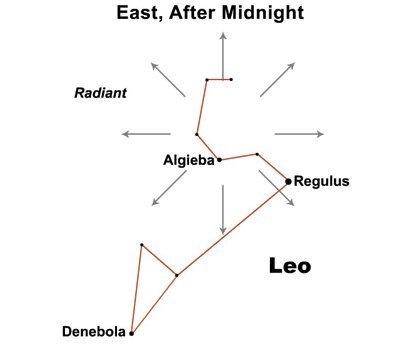
Their first
noticed appearance may have been
in the year 137, since which
date the stream has completed
fifty-two revolutions. According
to Theophanes of Byzantium, the
shower was seen from there in
November, 472; but the late
Professor Newton, our deservedly
great authority on the whole
subject of meteors, commenced
his list of the Leonids with
their appearance on the 13th of
October, 902, the Arabian Year
of the Stars, during the night
of the death of King Ibrahim ben
Ahmad, and added:
It will be seen
that all these showers are at
intervals of a third of a
century, that they are at a
fixed day of the year, and that
the day has moved steadily and
uniformly along the calendar, at
the rate of about a month in a
thousand years. (Allen)
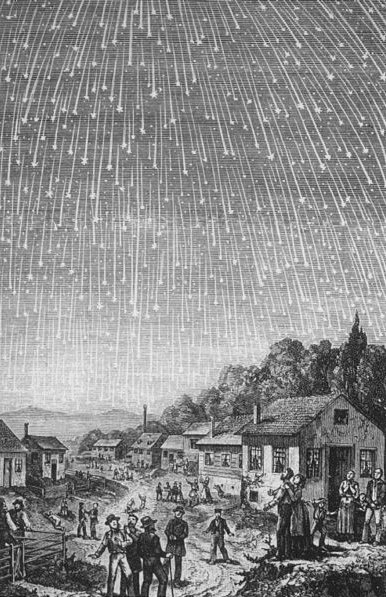 |
|
kua tupu te mea ke |
|
Ke. 1.
Other; different; different being;
hare ké, a different house;
e-ké-ro-á... e-ké-ro-á...
there are some who... and others
who...; me'e ké, something
distinct, different: te puaka ina
oona kuhane; me'e ké te tagata, he
hakari oona, he kuhane, an
animal has no soul; man is
different, he has a body, and a
soul; matu'a ké, the other
relatives. 2. Ké te kairua,
person who turns up for meals at
other people's homes. 3. Used in
exclamations: hahau ké! what
a cool breeze!; hana ké! how
hot! takeo ké! how cold!
Vanaga. Other, distinct, different,
diverse, otherwise; koona ke,
elsewhere; tagata ke, some
one else; mea ke, contrary,
distinct, otherwise; hakake,
feint, stratagem, to feign;
hagake, to act contrary. T Pau.:
ke, different. Mgv.: ke,
another, other, else, different, of
partial comparative value. Mq.:
ke, é, to be different,
changed, no longer the same. Ta.:
e, different, strange, other.
Churchill.
E,
adv. and ppr. Haw., from,
away, off, by, through, means of;
also, adverbially, something other,
something strange, new; adj.
contrary, opposed, adverse, other,
foreign. Sam.: e, ppr.
by, of; ese, other different,
strange. Ta., e, ppr.
by, through, from; adv. away,
off; adj. different, strange,
distant; ee, strange. N.
Zeal., ke, strange,
different. Malg., eze, of,
by.
Greek,
έκ, έξ, from out of,
from, by, of; έκει, in that
place, opp. to
ένθαδε,
in some other place than that of the
speaker, thither;
έκας,
afar off. Lat., e, ex,
out of, from. Liddell and Scott
(Gr.-Engl. Dict., s. v.) say: 'The
root of έτ-ερος is said to be
the same as Sanskr. ant-aras,
Goth. auth-ar, Germ.
and-er, Lat. alt-er, aut,
French aut-rui, our
eith-er, oth-er, itara
= alius, also in Sanskrit.'
Whatever the root of ant-aras,
auth-ar, alter, it
seems to me that
έκας
shows
nearer kindred to the Polynesian
e, ke, ee, ese,
eze, than to forms so
developed as ant-ar,
ant-ara, &c. (Fornander) |
 |
 |
 |
|
Cb6-19 (526) |
Cb6-20 (135 = 500 - 365) |
Cb6-21 (2 * 264 = 22 * 24) |
|
φ Hydrae (160.3) |
no star listed (161 =
249 - 88) |
VATHORZ POSTERIOR = θ Carinae
(162.1),
PEREGRINI = μ Velorum,
η Carinae
(162.6) |
|
... This [η
Carinae] is one of the most noted
objects in the heavens, perhaps even
so in almost prehistoric times, for
Babylonian inscriptions seem to
refer to a star noticeable from
occasional faintness in its light,
that Jensen thinks was
η.
And he claims it as one of the
temple stars associated with Ea, or
Ia, of Eridhu¹, the Lord of Waters,
otherwise known as Oannes², the
mysterious human fish and greatest
god of the kingdom.
¹ Eridhu, or Eri-duga, the Holy
City, Nunki, or Nunpe, one of the
oldest cities in the world, even in
ancient Babylonia, was that
kingdom's flourishing port on the
Persian Gulf, but, by the
encroachment of the delta, its site
is now one hundred miles inland. In
its vicinity the Babylonians located
their sacred Tree of Life.
² Berōssōs described Oannes as the
teacher of early man in all
knowledge; and in mythology he was
even the creator of man and the
father of Tammuz and Ishtar,
themselves associated with other
stars and sky figures. Jensen thinks
Oannes connected with the stars of
Capricorn; Lockyer finds his
counterpart in the god Chnemu of
Southern Egypt; and some have
regarded him as the prototype of
Noah ...
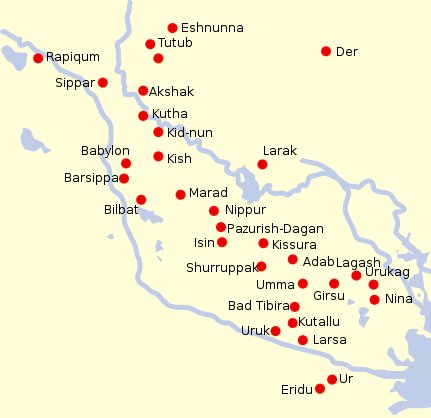 |
.jpg)
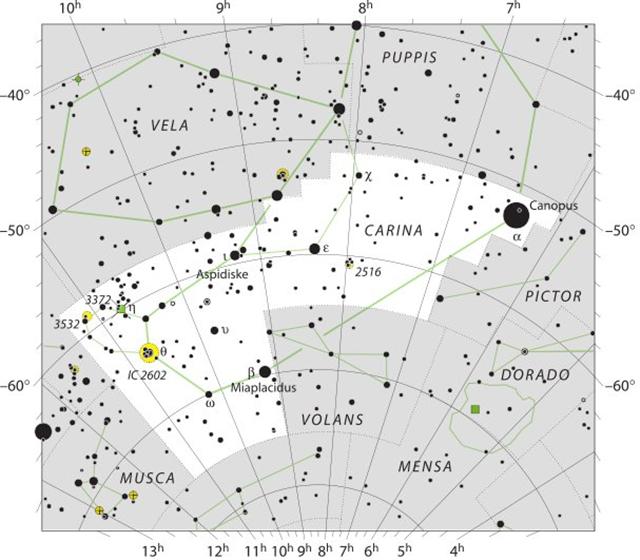 |
|
... The Pythagoreans make Phaeton
fall into Eridanus, burning part of
its water, and glowing still at the
time when the Argonauts passed by.
Ovid stated that since the fall the
Nile hides its sources. Rigveda
9.73.3 says that the Great Varuna
has hidden the ocean. The
Mahabharata tells in its own style
why the 'heavenly Ganga' had to be
brought down. At the end of the
Golden Age (Krita Yuga) a
class of Asura who had fought
against the 'gods' hid themselves in
the ocean where the gods could not
reach them, and planned to overthrow
the government. So the gods implored
Agastya (Canopus, alpha
Carinae = Eridu) for help. The great
Rishi did as he was bidden, drank up
the water of the ocean, and thus
laid bare the enemies, who were then
slain by the gods. But now, there
was no ocean anymore! Implored by
the gods to fill the sea again, the
Holy One replied: 'That water in
sooth hath been digested by me. Some
other expedient, therefore, must be
thought of by you, if ye desire to
make endeavour to fill the ocean ...
... Canopy ... covering over
a throne, etc. XIV (Wycl.). Late ME.
canope, canape - medL.
canopeum baldacchino, for L.
cōnōpēum, -eum, -ium
net over a bed, pavilion - Gr.
kōnōpeîon Egyptian bed with
mosquito curtains, f. kōnōps
gnat, mosquito ...
 |
|
kotia
hia |
te kava tu |
kiore |
tu te ika |
te moko e te hokohuki |
 |
 |
 |
 |
 |
|
Cb6-22 (137 = 529 - 392) |
Cb6-23 (615 - 85) |
Cb6-24 (223 - 84) |
Cb6-25 → 150 |
Cb6-26 |
|
ν Hydrae (163.1) |
no star listed (164 = 249 - 85)
ALTAIR (α
Aquilae)
|
Wings-27 (Snake)
η
Octans (165.4),
ALKES (Shallow Basin) =
α
Crateris
(165.6)
*124.0 = *165.4 - *41.4 |
ANA-TIPU-4 (Upper-side-pillar - where
the guards stood)
MERAK (Loin) = β Ursae Majoris
(166.2),
DUBHE (Bear) = α Ursae Majoris
(166.7) |
11h (167.4)
χ Leonis, χ¹ Hydrae (167.1), χ² Hydrae
(167.3) |
|
... Indeed, at the rituals of the
installation, the chief is invested with
the 'rule' or 'authority' (lewaa)
over the land, but the land itself is
not conveyed to him. The soil (qele)
is specifically identified with the
indigenous 'owners' (i taukei), a
bond that cannot be abrogated. Hence the
widespread assertion that traditionally
(or before the Lands Commission) the
chiefly clan was landless, except for
what it had received in provisional
title from the native owners, i.e., as
marriage portion from the original
people or by bequest as their sister's
son ... The ruling chief has no corner
on the means of production. Accordingly,
he cannot compel his native subjects to
servile tasks, such as providing or
cooking his daily food, which are
obligations rather of his own household,
his own line, or of conquered people (nona
tamata ga, qali kaisi sara). Yet
even more dramatic conditions are
imposed on the sovereignity at the time
of the ruler's accession. Hocart
observes that the Fijian chief is
ritually reborn on this occasion; that
is, as a domestic god. If so, someone
must have killed him as a dangerous
outsider. He is indeed killed by the
indigenous people at the very moment of
his consecration, by the offering of
kava that conveys the land to his
authority (lewaa). Grown from the
leprous body of a sacrificed child of
the native people, the kava the
chief drinks poisons him ...
Sacred product of the people's
agriculture, the installation kava
is brought forth in Lau by a
representative of the native owners (mataqali
Taqalevu), who proceeds to
separate the main root in no ordinary
way but by the violent thrusts of a
sharp implement (probably, in the old
time, a spear). Thus killed, the root
(child of the land) is then passed to
young men (warriors) of royal descent
who, under the direction of a priest of
the land, prepare and serve the ruler's
cup ... the tuu yaqona or
cupbearer on this occasion should be a
vasu i taukei e loma ni koro,
'sister´s son of the native owners in
the center of the
village'... Traditionally, remark, the
kava root was chewed to make the
infusion: The sacrificed child of the
people is cannibalized by the young
chiefs. The water of the kava,
however, has a different symbolic
provenance. The classic Cakaudrove
kava chant, performed at the
Lau installation rites, refers to it
as sacred rain water from the heavens
... This male and chiefly water (semen)
in the womb of a kava bowl whose
feet are called 'breasts' (sucu),
and from the front of which, tied to the
upper part of an inverted triangle, a
sacred cord stretches out toward the
chief ... The cord is decorated with
small white cowries, not only a sign of
chieftainship but by name, buli leka,
a continuation of the metaphor of birth
- buli, 'to form', refers in
Fijian procreation theory to the
conceptual acception of the male in the
body of the woman. The sacrificed child
of the people will thus give birth to
the chief. But only after the chief,
ferocious outside cannibal who consumes
the cannibalized victim, has himself
been sacrificed by it. For when the
ruler drinks the sacred offering, he is
in the state of intoxication Fijians
call 'dead from' (mateni) or
'dead from kava' (mate ni
yaqona), to recover from which is
explicitly 'to live' (bula). This
accounts for the second cup the chief is
alone accorded, the cup of fresh water.
The god is immediately revived, brought
again to life - in a transformed state
...
.jpg) |
|
kua tupu te kihikihi |
ku kikiu |
te henua |
|
Kikiu.
Kikiu.
1. Said of food insufficiently cooked
and therefore tough: kai kikiu.
2. To tie securely; to tighten the knots
of a snare: ku-kikiu-á te hereíga,
the knot has been tightened. 3.
Figuratively: mean, tight, stingy;
puoko kikiu. a miser; also: eve
kikiu. 4. To squeak (of rats,
chickens). Kiukiu, to chirp (of
chicks and birds); to make short noises.
The first bells brought by the
missionaries were given this name.
Vanaga. Kiukiu (kikiu). 1.
To resound, to ring, sonorous, bell,
bronze; kiukiu rikiriki, hand
bell; tagi kiukiu, sound of a
bell; kikiu, to ring, the
squeeking of rats; tariga kikiu,
din, buzzing; hakakiukiu, to
ring. Mgv.: kiukiu, a thin sound,
a soft sweet sound. 2. To disobey,
disobedience; mogugu kiukiu,
ungrateful; ka kikiu ro, to
importune. Churchill. |
 |
 |
 |
|
Cb6-27 |
Cb6-28 (223 - 80) |
Cb6-29 (536) |
|
Sept 5 (248 = 104 + 144)
AL SHARAS (The Ribs) =
β
Crateris
(168.6) |
6 (329 - 80)
Al Zubrah-9 (The Mane) /
Purva Phalguni-11 (First Reddish One)
ZOSMA (Girdle) =
δ
Leonis
(169.2),
COXA (Hips) =
θ
Leonis
(169.4)
*128 = *169.4 - *41.4 |
7
φ
Leonis (170.0),
ALULA (First
Spring of the Gazelle) =
ξ,
ν
Ursae Majoris
(170.5),
LABRUM =
δ |
|
JULY 3 (184 = 248 - 64) |
4 |
5 |
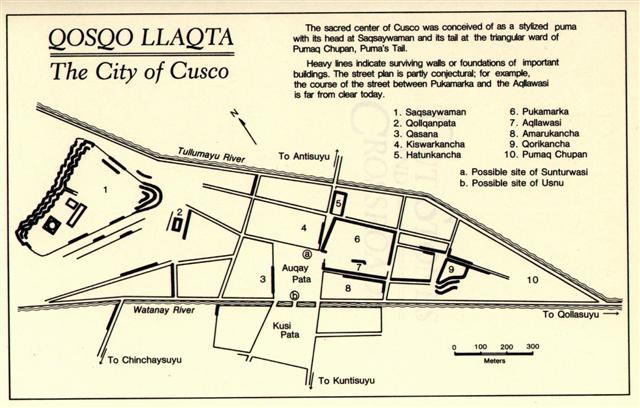 |
...
The
Maya New Year started with 1 Pop, the next
day being 2 Pop, etc. The final day of the
month, however, carried not the coefficient 20, but
a sign indicating the 'seating' of the month to
follow, in line with the Maya philosophy that the
influence of any particular span of time is felt
before it actually begins and persists somewhat
beyond its apparent termination
...
The first of this
pair of koti glyphs seems to be associated
with the Head of the Lion and the 2nd with the Hydra
- fire and water.
The other side of
the coin carrying the Cretan - the fellow who seems to have fallen
on his face at β
Crateris - carried Pythagoras, the Samoan:

 |
 |
 |
295 |
 |
 |
 |
|
Ca9-8 (8 * 29½) |
Ca9-9 |
Ca9-10 |
Cb6-27 (264 + 270) |
Cb6-28 (→ 2 * 314) |
Cb6-29 (136 + 400) |
|
ku tupu te poporo |
kotia |
kua rere |
kua tupu te kihikihi |
ku kikiu |
te henua |
|
Poporo. A plant (Solanum
forsteri); poporo haha, a
sort of golden thistle. Vanaga.
A berry whose juice is
mixed with ashes of ti leaves in
tattoing. Ta.: oporo, a capsicum
plant. The Tahiti oporo is not a
degradation of poporo but is the
original poro stem augmented by
that o which in Tahiti is
word-formative in a sense too elusive to
find expression in European ideas. Mgv.:
poporo, the July season when the
leaves fall. Mq.: pororo, dry,
arid. Sa.: palolo-mua, July. Ma.:
paroro, cloudy weather.
Poporohiva, milk thistle. Churchill. |
Kihi.
Kihikihi, lichen;
also: grey, greenish grey, ashen.
Vanaga. Kihikihi, lichen T, stone
T. Churchill.
The Hawaiian day was divided in three
general parts, like that of the early
Greeks and Latins, - morning, noon, and
afternoon - Kakahi-aka, breaking
the shadows, scil. of night;
Awakea, for Ao-akea, the
plain full day; and Auina-la, the
decline of the day.
The lapse of the night, however, was
noted by five stations, if I may say so,
and four intervals of time, viz.: (1.)
Kihi, at 6 P.M., or about sunset;
(2.) Pili, between sunset and
midnight; (3) Kau, indicating
midnight; (4.) Pilipuka, between
midnight and surise, or about 3 A.M.;
(5.) Kihipuka, corresponding to
sunrise, or about 6 A.M. ... (Fornander) |
|
314 / 2
= 584 / 2 - 270 / 2
= 157 = 3 + 154
= 299
- 284 / 2 =
590 / 2 - 6 / 2 - 135 (= 270 / 2)
... 471
(= 229 + 242) = 1½ * 314 = 3 * 157 = 300
+ 3 * 57, which should remind us of how
Epimenides slept for 57 years in a cave
(471 + 57 = 2 * 264 = 11 * 48) and how
he then lived on to be 157 years (or 299
or 154) ... |
|
CLOSE TO THE FULL MOON: |
|
φ Bootis (236.2), ω Lupi, τ Librae
(236.3), ψ¹ Lupi (236.7), ζ Cor.
Borealis (236.9) |
κ Librae (237.2), ι Serpentis (237.4),
ψ² Lupi, ρ Oct. (237.5), γ Cor.
Borealis, η Librae (237.7),
COR SERPENTIS (Heart of the Serpent) =
α Serpentis
(237.9)
*196 = *237.4 - *41.4 |
π Cor. Borealis,
UNUK ELHAIA (Necks of the Serpents) = λ
Serpentis
(238.1),
CHOW = β Serpentis
(238.6) |
|
AL SHARAS (The Ribs) =
β
Crateris
(168.6) |
Al Zubrah-9 (The Mane) /
Purva Phalguni-11 (First Reddish One)
ZOSMA (Girdle) =
δ
Leonis
(169.2),
COXA (Hips) =
θ
Leonis
(169.4)
*128 = *169.4 - *41.4 |
φ
Leonis (170.0),
ALULA (First
Spring of the Gazelle) =
ξ,
ν
Ursae Majoris
(170.5),
LABRUM =
δ
Crateris
(170.6) |
|
ψ Persei (53.1)
ACRUX (α
Crucis)
|
δ Persei (54.7) |
Al Thurayya-27 (Many Little Ones) /
Krittikā-3 (Nurses of Kārttikeya) /
TAU-ONO (Six Stones)
ATIKS =
ο Persei,
RANA (Frog) =
δ
Eridani
(55.1),
CELAENO (16 Tauri), ELECTRA (17),
TAYGETA (19),
ν
Persei (55.3),
MAIA (20), ASTEROPE (21), MEROPE (23)
(55.6) |
CLOSE TO THE SUN |
And from our experience with the coin
carrying the Tail of the stranded Argo Navis ship (Amor = Roma backwards) on one side and the
Head of Janus (under water, submerged) on the other, we can
guess there was a
kind of vertical contrast between Epimenides and Pythagoras.
.jpg)
Al Sharas was at the Full Moon in day
80 + 168 = 248 (September 5) and north of the equator
this date indicated a time when summer (the 'year in
leaf') was receding.
But in day 248 - 183 = 65, viz. in March 6 (3-6 →
360), the Sun was at Al Sharas - the Rib Cage of the
Skeleton Tree (the 'year in straw'):
... In
north Asia the common mode of reckoning is in
half-year, which are not to be regarded as such but
form each one separately the highest unit of time:
our informants term them 'winter year' and 'summer
year'. Among the Tunguses the former comprises 6½
months, the latter 5, but the year is said to have
13 months; in Kamchatka each contains six months,
the winter year beginning in November, the summer
year in May; the Gilyaks on the other hand give five
months
to
summer and seven to winter. The Yeneseisk Ostiaks
reckon and name only the seven winter months, and
not the summer months. This mode of reckoning seems
to be a peculiarity of the far north: the Icelanders
reckoned in misseri, half-years, not in whole
years, and the rune-staves divide the year into a
summer and a winter half, beginning on April 14 and
October 14 respectively. But in Germany too, when it
was desired to denote the whole year, the combined
phrase 'winter and summer' was employed, or else
equivalent concrete expressions such as 'in bareness
and in leaf', 'in straw and in grass' ...

The
Apollonian Pythagoras evidently came to power when the
Dionysian Epimenides (with his curved logic) was
forced to leave. We can see the shiny top of the
head of Pythagoras, but a hood is hiding the
corresponding place on Epimenides.

|















.jpg)




.jpg)





.jpg)

